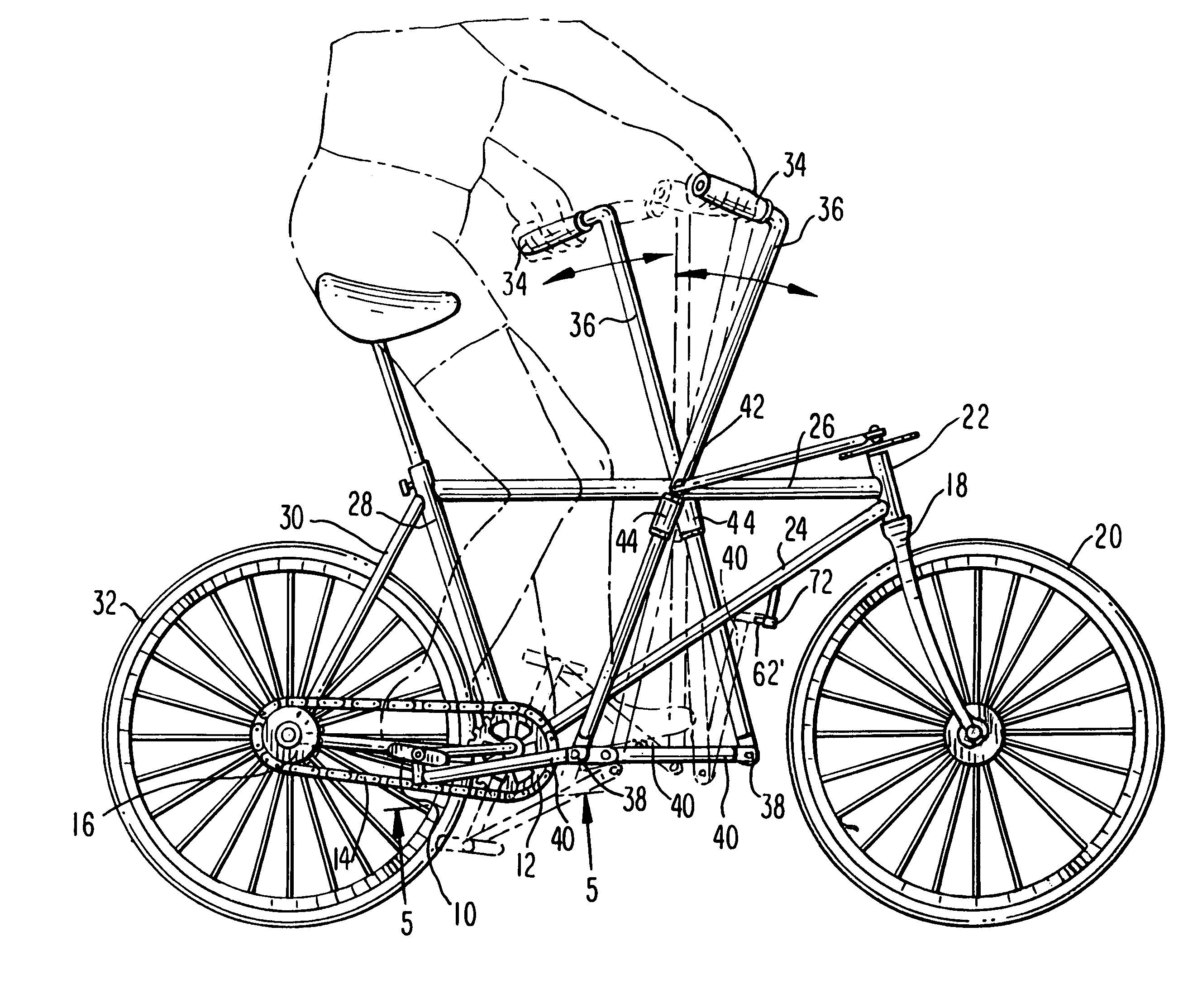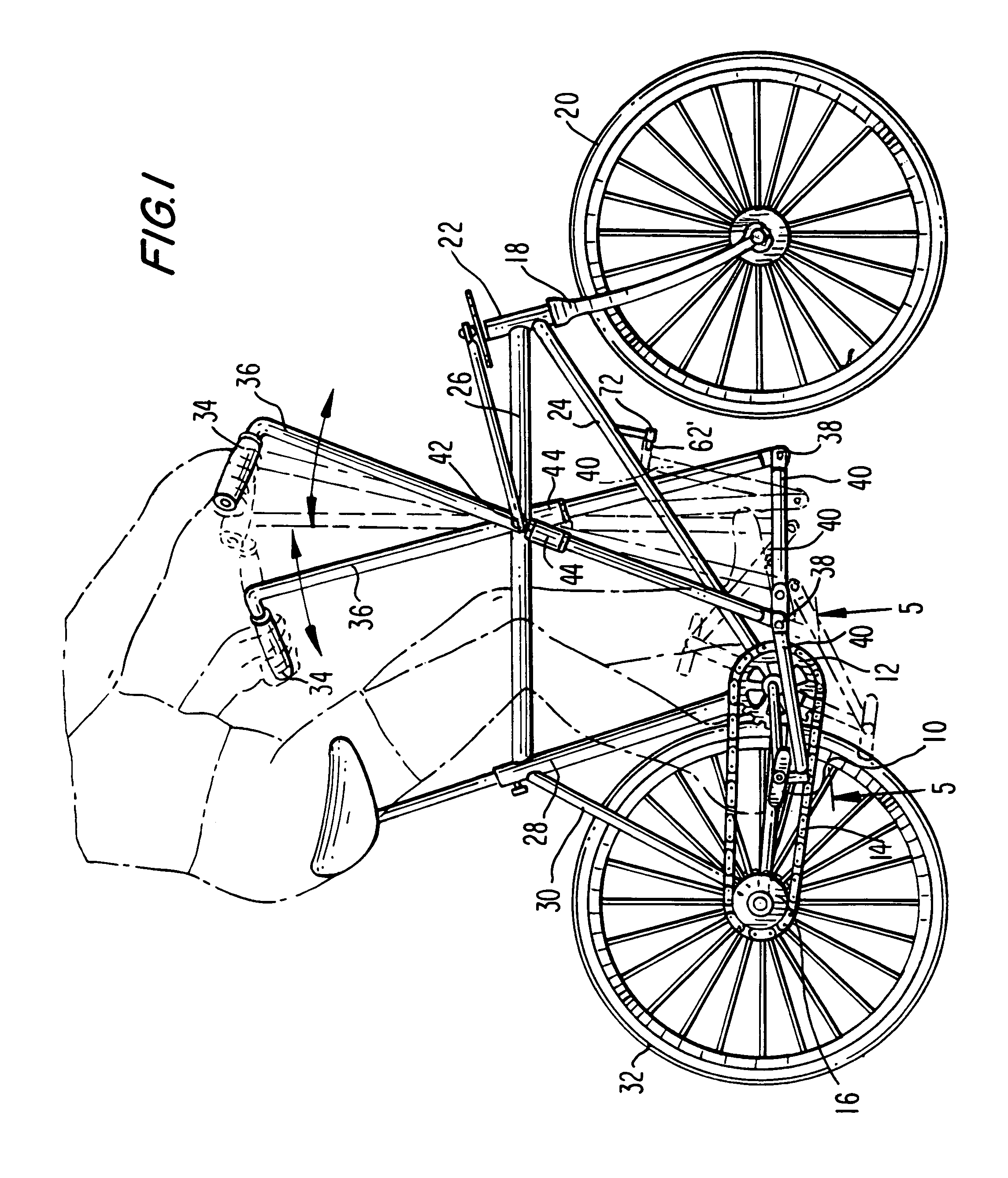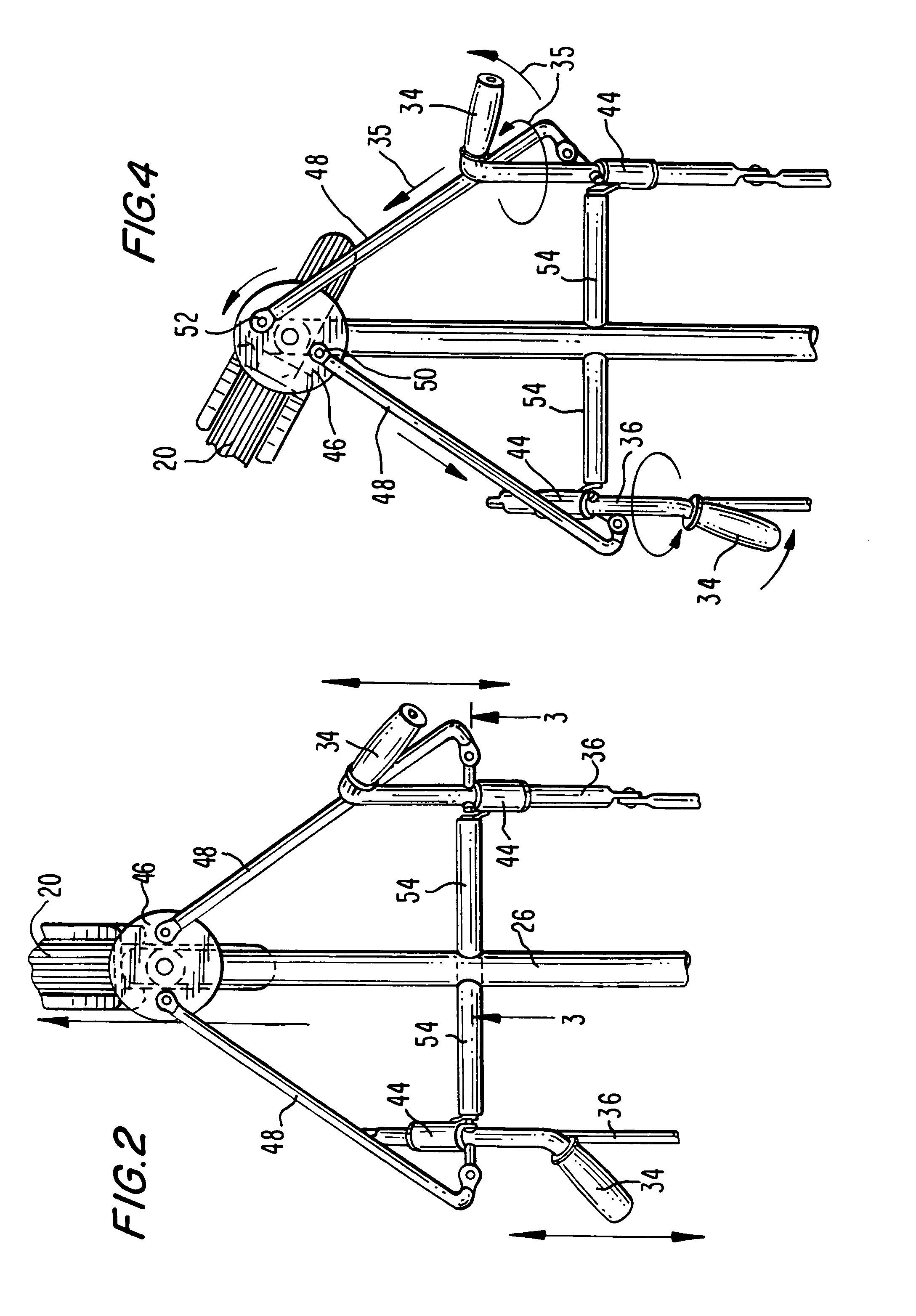Bicycle propulsion system
a propulsion system and bicycle technology, applied in the direction of steering devices, cycle equipments, vehicle components, etc., can solve the problem of providing primary exercise to the lower part of the rider's body, and achieve the effect of reliable and positive steering for
- Summary
- Abstract
- Description
- Claims
- Application Information
AI Technical Summary
Benefits of technology
Problems solved by technology
Method used
Image
Examples
Embodiment Construction
[0016]Referring to the drawings, and particularly FIG. 1 thereof, the elements of a typical two-wheel bicycle design are shown. Pedals 10 are used to power the bicycle by connection to sprocket 12 which mounts chain 14 to rear wheel sprocket 16, and for operation in the conventional manner for two-wheel bicycles. A steering fork 18 is mounted astride the center of the front wheel 20 for steering by motion within the tube 22 at the top of fork 18. The conventional and the present invention bicycles also have a diagonal frame piece 24 and horizontal frame piece 26, with seat mount frame piece 28 and the rotatable frame piece 30, rotatably connected to rear wheel 32. Handles 34 are also provided, but in the present invention connected to levers 36, and at the top thereof. Such levers at the bottom ends thereof are connected by swivel joints 38 to power links 40. Such power links 40 are formed and arranged to connect and disconnect from pedals 10, as will be described hereinafter with r...
PUM
 Login to View More
Login to View More Abstract
Description
Claims
Application Information
 Login to View More
Login to View More - R&D
- Intellectual Property
- Life Sciences
- Materials
- Tech Scout
- Unparalleled Data Quality
- Higher Quality Content
- 60% Fewer Hallucinations
Browse by: Latest US Patents, China's latest patents, Technical Efficacy Thesaurus, Application Domain, Technology Topic, Popular Technical Reports.
© 2025 PatSnap. All rights reserved.Legal|Privacy policy|Modern Slavery Act Transparency Statement|Sitemap|About US| Contact US: help@patsnap.com



